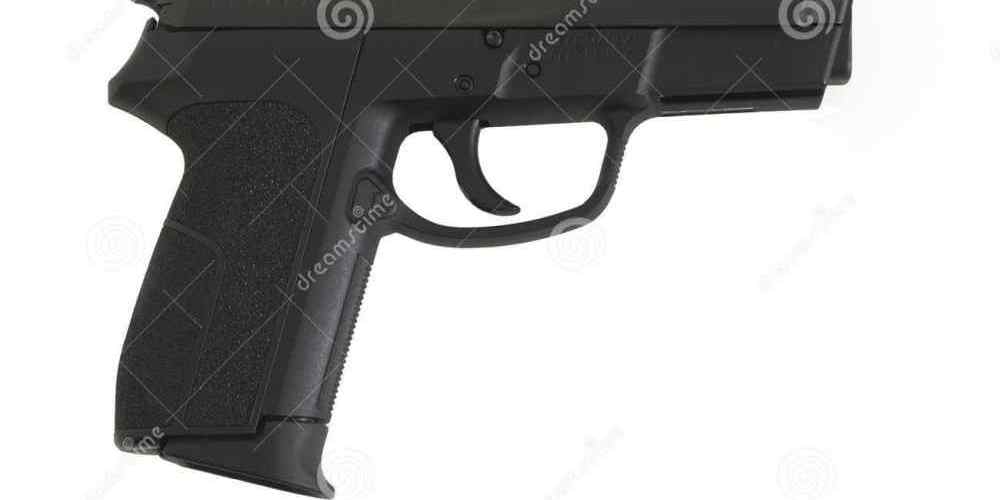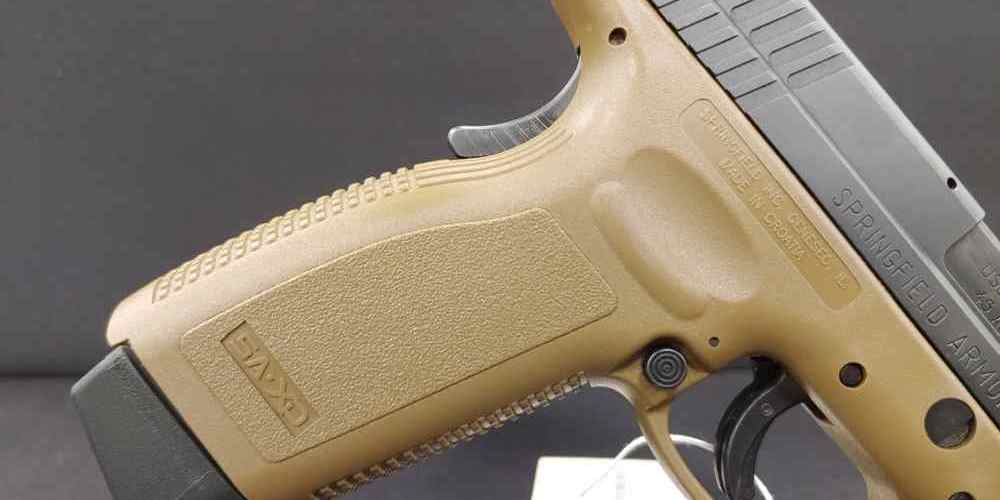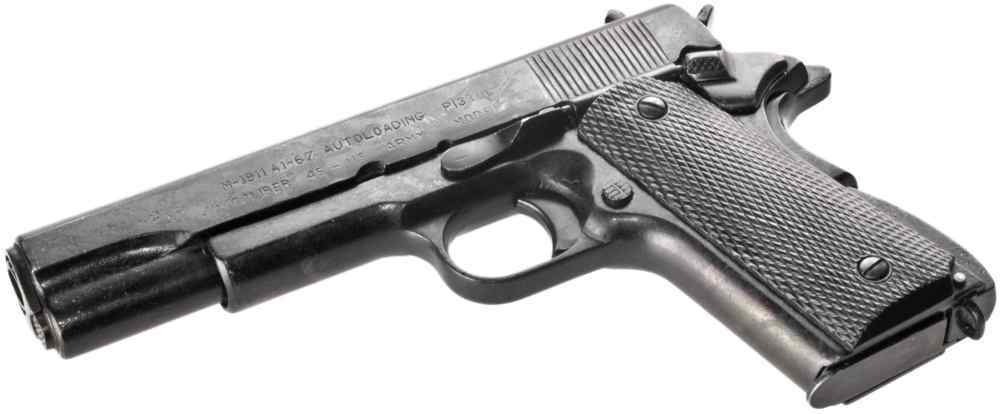“Empowering soldiers with precision and speed since the 20th century.”
Evolution of Semi-Auto Pistols in Military Use
Semi-automatic pistols have played a crucial role in military operations for over a century. These firearms have evolved significantly over time, with advancements in technology and design improving their performance and reliability on the battlefield. In this article, we will explore the history of semi-automatic pistols in military use, from their early development to their widespread adoption by armed forces around the world.
The first semi-automatic pistols were developed in the late 19th century, with inventors like John Browning and Georg Luger leading the way in creating innovative designs. These early pistols were a significant improvement over the revolvers that were commonly used by military forces at the time, offering faster reload times and increased firepower. The adoption of semi-automatic pistols by military forces began in the early 20th century, with countries like Germany, the United States, and Italy incorporating these firearms into their arsenals.
One of the most iconic semi-automatic pistols of the early 20th century was the Luger P08, developed by Georg Luger in 1898. This pistol was widely used by the German military during World War I and World War II, earning a reputation for its accuracy and reliability in combat. The Luger P08 set the standard for semi-automatic pistols in military use, with its sleek design and innovative toggle-lock mechanism influencing future firearm designs.
During World War II, the United States military adopted the M1911 pistol as its standard-issue sidearm. Developed by John Browning in the early 20th century, the M1911 was a rugged and reliable pistol that saw widespread use by American troops in both World War I and World War II. The M1911 remained in service with the U.S. military for over 70 years, a testament to its durability and effectiveness in combat.
In the post-World War II era, semi-automatic pistols continued to evolve, with new designs incorporating features like double-action triggers, polymer frames, and high-capacity magazines. These advancements improved the performance and versatility of semi-automatic pistols, making them even more effective in military operations. Countries around the world began to adopt modern semi-automatic pistols like the Beretta M9, Glock 17, and SIG Sauer P226 as standard-issue sidearms for their armed forces.
Today, semi-automatic pistols are a staple of military arsenals worldwide, with a wide range of models available to suit different mission requirements. These firearms offer soldiers a lightweight and compact weapon that provides rapid firepower in close-quarters combat situations. Modern semi-automatic pistols are designed to be durable, reliable, and easy to maintain, making them ideal for use in harsh environments and challenging conditions.
In conclusion, the evolution of semi-automatic pistols in military use has been a fascinating journey, from the early designs of John Browning and Georg Luger to the modern firearms used by armed forces today. These pistols have proven themselves to be invaluable tools for soldiers on the battlefield, offering a combination of firepower, reliability, and ease of use that is unmatched by other firearms. As technology continues to advance, we can expect to see further innovations in semi-automatic pistol design, ensuring that these weapons remain a vital component of military operations for years to come.
Impact of Semi-Auto Pistols on Military Tactics
Semi-automatic pistols have played a significant role in military operations for over a century. These firearms have revolutionized the way soldiers engage in combat, providing them with increased firepower and versatility on the battlefield. In this article, we will explore the impact of semi-auto pistols on military tactics and how they have shaped the way wars are fought.

The introduction of semi-automatic pistols in the late 19th century marked a significant advancement in firearms technology. These pistols allowed soldiers to fire multiple rounds without the need to manually cock the weapon after each shot, providing them with a significant advantage in combat situations. The increased rate of fire and ease of use made semi-auto pistols a popular choice among military forces around the world.
One of the key advantages of semi-automatic pistols is their ability to quickly engage multiple targets without the need to reload frequently. This has had a profound impact on military tactics, allowing soldiers to maintain a high level of firepower during intense firefights. The increased capacity of semi-auto pistols also means that soldiers can carry more ammunition without adding significant weight to their loadout, further enhancing their combat effectiveness.
Another important aspect of semi-auto pistols is their accuracy and reliability. These firearms are known for their precision and consistency, making them ideal for engaging targets at various distances. The improved accuracy of semi-auto pistols has allowed soldiers to engage enemy forces with greater confidence, increasing their chances of success in combat situations.
The compact size of semi-automatic pistols also makes them ideal for close-quarters combat. Soldiers can easily maneuver in tight spaces and engage targets at short distances with ease. This has led to the development of specialized tactics and training techniques that focus on the use of semi-auto pistols in urban warfare and other close-quarters combat scenarios.
In addition to their impact on combat tactics, semi-automatic pistols have also influenced the way military forces train their soldiers. The increased rate of fire and ease of use of these firearms have led to changes in marksmanship training and combat drills. Soldiers are now trained to quickly and accurately engage targets with semi-auto pistols, preparing them for the realities of modern warfare.
The evolution of semi-automatic pistols continues to shape the way military forces operate on the battlefield. Advances in technology have led to the development of more compact and lightweight pistols that offer even greater firepower and versatility. These firearms are now an essential tool for soldiers in combat, providing them with the means to effectively engage enemy forces and achieve their objectives.
In conclusion, semi-automatic pistols have had a profound impact on military tactics and operations. These firearms have revolutionized the way soldiers engage in combat, providing them with increased firepower, accuracy, and versatility on the battlefield. The evolution of semi-auto pistols continues to shape the way wars are fought, ensuring that soldiers are well-equipped to face the challenges of modern warfare.
Notable Semi-Auto Pistols Used by Military Forces
Semi-automatic pistols have played a significant role in military operations for over a century. These firearms offer a balance of firepower, accuracy, and ease of use that make them a popular choice among military forces around the world. In this article, we will explore the history of semi-auto pistols in military use and highlight some notable examples of these firearms.
The use of semi-automatic pistols in military applications can be traced back to the late 19th century. The introduction of the Mauser C96 in 1896 marked a significant milestone in the development of semi-auto pistols for military use. This pistol featured a detachable magazine and a powerful 7.63mm cartridge, making it a formidable weapon on the battlefield.
During World War I, semi-automatic pistols saw widespread use among military forces. The Colt M1911, designed by John Browning, became the standard-issue sidearm for the United States military during this conflict. Its .45 ACP cartridge and rugged design made it a reliable and effective weapon for soldiers in the trenches.
In the years following World War I, semi-automatic pistols continued to evolve and improve. The Walther P38, introduced in 1938, featured a double-action trigger mechanism and a high-capacity magazine, making it a popular choice among German military forces during World War II. The P38’s design influenced many subsequent semi-auto pistols and remains a classic example of German engineering.
After World War II, semi-automatic pistols became even more prevalent in military use. The Beretta M9, adopted by the United States military in 1985, replaced the venerable M1911 as the standard-issue sidearm. The M9 featured a 9mm cartridge and a double-action trigger, making it a versatile and reliable weapon for soldiers in combat situations.
In recent years, semi-automatic pistols have continued to play a vital role in military operations around the world. The Glock 17, introduced in 1982, has become a popular choice among military and law enforcement agencies due to its lightweight design, high-capacity magazine, and ease of use. The Glock’s polymer frame and striker-fired action have set a new standard for semi-auto pistols in terms of reliability and durability.
Other notable examples of semi-automatic pistols used by military forces include the SIG Sauer P226, the Heckler & Koch USP, and the FN Five-seveN. These firearms offer a range of features and capabilities to meet the diverse needs of modern military operations.
In conclusion, semi-automatic pistols have a long and storied history in military use. From the early days of the Mauser C96 to the modern designs of the Glock 17, these firearms have proven themselves to be reliable, effective, and versatile weapons for soldiers in combat situations. As technology continues to advance, we can expect to see even more innovations in the design and performance of semi-auto pistols for military use.
Advantages and Disadvantages of Semi-Auto Pistols in Military Applications
Semi-automatic pistols have been a staple in military applications for decades, offering a balance of firepower, reliability, and ease of use. In this article, we will explore the advantages and disadvantages of semi-auto pistols in military use.
One of the key advantages of semi-auto pistols is their ease of use. Unlike revolvers, which require manual cocking of the hammer before each shot, semi-auto pistols automatically chamber a new round after each shot is fired. This allows for faster follow-up shots and increased accuracy in high-stress situations.
Another advantage of semi-auto pistols is their higher ammunition capacity. Most semi-auto pistols have a magazine capacity of 10 rounds or more, compared to the typical 6-round capacity of a revolver. This means that soldiers can carry more ammunition without the need for frequent reloads, giving them a tactical advantage in combat situations.
Semi-auto pistols also offer a more compact and lightweight design compared to other firearms, making them easier to carry and conceal. This is especially important for military personnel who may need to carry their sidearm for extended periods of time or in close quarters combat situations.
However, there are also some disadvantages to using semi-auto pistols in military applications. One of the main drawbacks is their reliance on ammunition. Unlike revolvers, which can fire a wide range of ammunition types without issue, semi-auto pistols can be more finicky when it comes to the type and quality of ammunition used. This can lead to malfunctions and misfires if the pistol is not properly maintained or if low-quality ammunition is used.
Another disadvantage of semi-auto pistols is their susceptibility to jamming. While modern semi-auto pistols are designed to be reliable and resistant to jamming, they can still experience malfunctions due to dirt, debris, or improper maintenance. This can be a serious issue in combat situations where a jammed pistol can mean the difference between life and death.
Despite these disadvantages, semi-auto pistols remain a popular choice for military personnel due to their ease of use, high ammunition capacity, and compact design. With proper training and maintenance, semi-auto pistols can be a reliable and effective tool for soldiers in a variety of combat situations.
In conclusion, semi-auto pistols have a long history of use in military applications and offer a number of advantages over other firearms. While they may have some drawbacks, such as susceptibility to jamming and reliance on ammunition, the benefits of semi-auto pistols make them a valuable tool for military personnel. By understanding the advantages and disadvantages of semi-auto pistols, soldiers can make informed decisions about their use in combat situations.
Future Trends in Semi-Auto Pistol Technology for Military Use
Semi-automatic pistols have been a staple in military use for decades, providing soldiers with a reliable sidearm for self-defense and close-quarters combat. These pistols have evolved over time, incorporating new technologies and features to improve performance and reliability on the battlefield. In this article, we will explore the history of semi-auto pistols in military use and discuss future trends in semi-auto pistol technology for military applications.
The use of semi-automatic pistols in military settings dates back to the early 20th century, with the introduction of the Colt M1911. This iconic pistol was adopted by the United States military in 1911 and served as the standard-issue sidearm for American soldiers for over 70 years. The M1911 was praised for its stopping power and reliability, making it a favorite among soldiers and law enforcement officers alike.
As technology advanced, so did the design of semi-automatic pistols. In the 1980s, the Beretta M9 was adopted by the US military as the new standard-issue sidearm, replacing the aging M1911. The Beretta M9 featured a double-action trigger system, a higher magazine capacity, and improved ergonomics, making it a more versatile and user-friendly pistol for soldiers in the field.
In recent years, advancements in materials and manufacturing processes have led to the development of new semi-automatic pistols with enhanced features and capabilities. One such example is the Glock 17, a polymer-framed pistol that has gained popularity among military and law enforcement agencies around the world. The Glock 17 is known for its lightweight design, high magazine capacity, and exceptional reliability, making it a top choice for soldiers in combat situations.
Looking ahead, future trends in semi-auto pistol technology for military use are focused on improving accuracy, ergonomics, and modularity. Manufacturers are exploring new materials and design concepts to create pistols that are lighter, more durable, and easier to customize for individual users. Additionally, advancements in optics and sighting systems are being integrated into pistol designs to enhance target acquisition and accuracy in low-light conditions.
One of the most exciting developments in semi-auto pistol technology is the integration of smart technology, such as biometric sensors and electronic sights, to improve performance and safety on the battlefield. These features can provide soldiers with real-time data on their pistol’s status, including round count, battery life, and maintenance alerts, ensuring that their weapon is always ready for action.
In conclusion, semi-automatic pistols have played a crucial role in military operations for over a century, providing soldiers with a reliable and effective sidearm for self-defense and combat. As technology continues to advance, the future of semi-auto pistol technology for military use looks promising, with new features and capabilities that will enhance performance and safety on the battlefield. Whether it’s improving accuracy, ergonomics, or modularity, manufacturers are constantly pushing the boundaries of pistol design to meet the evolving needs of soldiers in the field. With these advancements, the semi-auto pistol will continue to be a vital tool for military personnel around the world.






